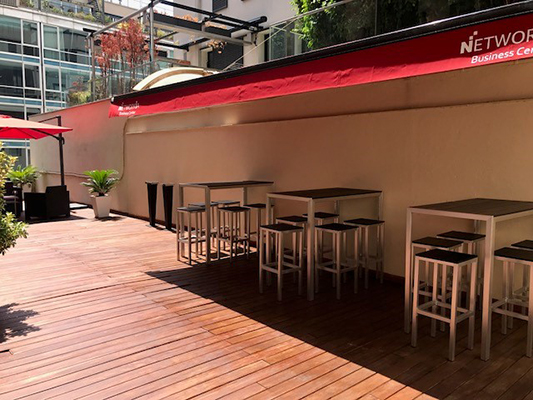It is a reality that the line between personal life and working life is becoming thinner and thinner. Technology causes this barrier, once very clearly defined, to be diluted. It is not uncommon to receive professional calls outside of work, to answer e-mails during non-working hours and, therefore, if work has invaded personal life, it is normal for work to promote social life.
This tendency provokes a very clear change in the work spaces where the common areas that promote collaboration and flexibility take protagonism to the detriment of the private offices. In the same sense, the worker profile of the new generations, the millenials, fit better in this type of organization and way of working.
The current design of work areas must accommodate the diversity of activities carried out in an office to create different spaces that allow you to choose the best corner where to develop each task instead of always working in the same and unique environment, anchored in a desk. As Eduardo Salsamendi, president of ProWorkSpaces, the association of the flexible office sector, says, “work has ceased to be a place to become an action”, which means a change of mentality where the presential culture disappears to work. Where we now work tomorrow there will be a presentation or a business meeting and the spaces have to give the possibility to adapt it and even inspire it. Obviously, ergonomics and the quality of light will always be present. In this sense, architects and interior designers take a strong leading role.
“Where work is being done tomorrow, there will be a presentation or a business meeting and the spaces must be able to adapt and even inspire it”.
The large companies are already collecting and implementing this trend, as well as, above all, the large national and international operators. The movements of these actors, pioneers in this change towards socialisation, are dragging the rest in this direction. We are seeing that this is not a fashion but something that will increase and transform offices into unrecognizable spaces as they were conceived a little over 10 years ago.
Another element that is encouraging this revolution in work spaces is the arrival of the so-called knowmad, the nomads of knowledge. It is true that the great crisis of 2008 accelerated the growth of these value-added professionals, but it is also true that technology allows individual knowledge to work at any level and globally. This type of worker does not want to work in the coldness of individuality and this favours the collaborative culture of flexible offices, where there is no dependence between members, but a very enriching interdependence that fosters a sense of Community, another element that is gaining much strength.
The flexible offices sector: Coworking or Business Centers was irrelevant 10 years ago. It is now growing at rates above 20% per year. At the end of 2017 there were about 18,000 spaces in the world and the five-year forecast, in 2022, is more than 30,000 spaces. In addition to a constant increase in the average surface area per center that does not stop growing every year. This gives an idea of the level of transformation of workspaces.
Welcome to the revolution!
Author: Juanjo Martínez (CEO & Founder NETWORKIA)
Source Via Company

